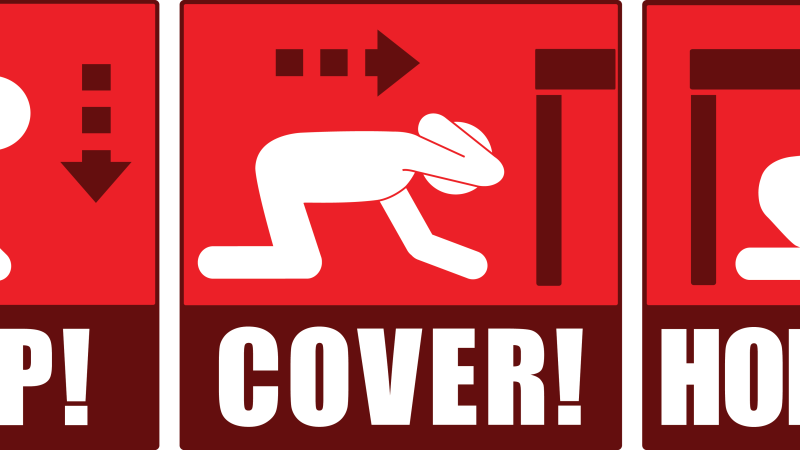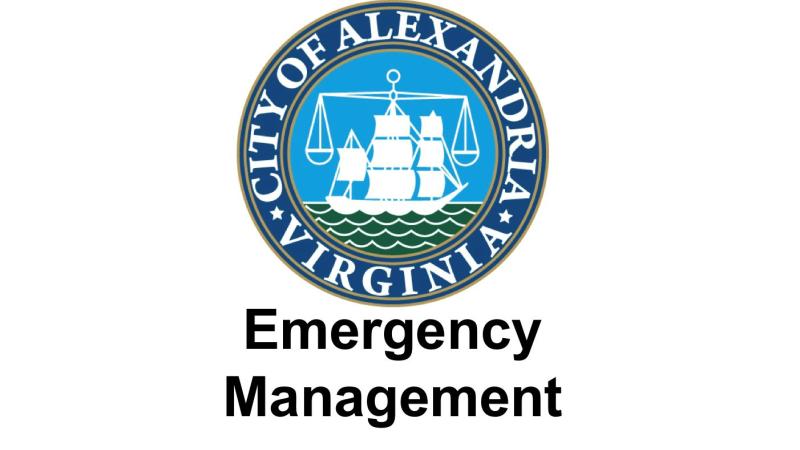Earthquake Preparedness
About Earthquakes
An earthquake is the sudden, rapid shaking of the earth, caused by the breaking and shifting of underground rock. Earthquakes can cause buildings to collapse
and cause heavy items to fall, resulting in injuries and property damage. Earthquakes can happen anywhere – though higher risk areas include California, Alaska, and the Mississippi Valley; happen without warning; cause fires and damage roads; and cause tsunamis, landslides and avalanches.
The Great ShakeOut Earthquake Drill
Every year the Office of Emergency Management encourages participation in the Great ShakeOut Earthquake Drill. Federal, state, and local emergency management experts and other official preparedness organizations recommend that "Drop, Cover, and Hold On" is the best course of action to reduce injury and death during earthquakes. The Great SouthEast ShakeOut is an annual opportunity to practice how to protect ourselves during earthquakes.
Prepare Now
- Secure items, such as televisions, and objects that hang on walls. Store heavy and breakable objects on low shelves.
- Practice "Drop, Cover, then Hold On" with family and coworkers. Drop to your hands and knees. Cover your head and neck with your arms. Crawl only as far as needed to reach cover from falling materials. Hold on to any sturdy furniture until the shaking stops.
- Create a family emergency communications plan that has an out-of-state contact. Plan where to meet if you get separated.
- Make a supply kit that includes enough food and water for at least three days, a flashlight, a fire extinguisher, and a whistle.
- Consider each person's specific needs, including medication. Do not forget the needs of pets. Have extra batteries and charging devices for phones and other critical equipment.
- Consider obtaining an earthquake insurance policy. Standard homeowner's insurance does not cover earthquake damage.
During an Earthquake
The steps to take during an earthquake at work, home or away are:
- DROP to the ground (before the earthquake drops you)
- Take COVER by getting under a sturdy desk or table, and
- HOLD ON until the shaking stops
If there isn’t a table or desk near you, drop to the ground in an inside corner of the building, and cover your head and neck with your hands and arms. Do not try to run to another room to get under a table. Earthquakes occur without warning and may be so violent that you cannot run or crawl. DROP, COVER AND HOLD ON IMMEDIATELY.
DO NOT RUN OUTSIDE! Trying to run in an earthquake is dangerous because the ground is moving and you can easily fall or be injured by falling bricks, glass, or other building materials. In the U.S., you are much safer staying inside and get under a table.
If you are in a vehicle, pull over and stop in a clear area that is away from buildings, trees, overpasses, underpasses, or utility wires. If you're in a bed, stay there and cover your head and neck with a pillow. If you are in a high-rise building, expect fire alarms and sprinklers to go off. Do not use elevators.
After an earthquake, expect aftershocks to follow the largest shock of an earthquake. Check yourself for injury and provide assistance to others if you have training. If in a damaged building, go outside and quickly move away from the building. Do not enter damaged buildings. Use extreme caution during post-disaster clean-up of building and around debris. Do not attempt to remove heavy debris by yourself. Wear protective clothing, including a long-sleeved shirt, long pants, work gloves, and sturdy, thick-soled shoes during clean-up.



